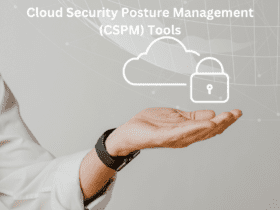As the global need for cloud computing continues to increase, many organizations have been turning to hyperscalers to meet their needs. Hyperscalers offer a unique combination of scalability, flexibility, and cost-effectiveness that no other cloud service provider can match. However, this benefit comes with a unique set of challenges when it comes to security. In this article, we will discuss how hyperscalers are changing the landscape of cloud security, from offering innovative solutions to introducing new threats.
What is Hyperscale?
Hyperscale is a term used to describe the ability of cloud computing systems to scale their infrastructure as needed. Hyperscalers are companies that have built large-scale data centers with thousands of servers, allowing them to handle massive amounts of data and traffic. These companies include industry giants such as Amazon Web Services, Microsoft Azure, and Google Cloud Platform.
As hyperscalers continue to grow and expand their networks, they are also changing the landscape of cloud security. With their large-scale infrastructure, hyperscalers can offer more advanced security features such as firewalls, intrusion detection systems, and encryption at rest. This ensures that customer data is protected against potential cyber attacks or breaches. However, there are also concerns about the potential risks associated with relying on a small number of hyperscalers for cloud services.
Cloud Security Solutions
Hyperscalers like Amazon Web Services, Microsoft Azure, and Google Cloud Platform dominate the cloud computing market and are changing the way we approach cloud security. These providers offer top-notch security features that many businesses would be hard-pressed to replicate on their own. For example, AWS provides a wide range of security services such as identity and access management, network security, data encryption, and threat detection through its Amazon GuardDuty service.
While hyperscaler platforms do provide robust security measures, it’s important for businesses to understand that they’re ultimately responsible for securing their own data in the cloud. This means implementing additional layers of protection beyond what is provided by the cloud provider. One way to achieve this is through DevSecOps – a methodology that integrates security into every phase of the software development process.
Another solution is working with a managed service provider (MSP) who can help manage and secure your sensitive data within public clouds while ensuring compliance with regulations such as HIPAA or GDPR. MSPs can provide expertise in both cloud technology and cybersecurity solutions to help businesses stay ahead of potential threats while leveraging hyperscaler benefits for scalability and performance improvements.
Hyperscaler Cloud Security Features
Hyperscalers are changing the way we think about cloud security. With their large-scale operations and global reach, hyperscalers have developed a unique set of security features that provide unparalleled protection for their customers’ data. One of the most important features of hyperscaler cloud security is the ability to scale resources up or down as needed. This means that if there is a sudden increase in traffic or demand, the hyperscaler can quickly allocate more resources to ensure that your data remains secure.

Another key feature of hyperscaler cloud security is the use of advanced encryption techniques. Hyperscalers use industry-leading encryption standards to protect customer data at rest and in transit. They also regularly perform vulnerability assessments and penetration testing to identify any potential weaknesses in their systems.
Finally, many hyperscalers offer additional security features such as identity and access management (IAM) tools, network firewalls, intrusion detection systems (IDS), and distributed denial-of-service (DDoS) protection. These features help ensure that only authorized users have access to sensitive data while protecting against cyberattacks and other threats.
Overall, hyperscaler cloud security features provide a level of protection that is unmatched by traditional on-premise solutions. As more businesses migrate to the cloud, it’s clear that hyperscalers will continue to play an important role in securing our digital infrastructure.
Benefits of Hyperscaler Security
Hyperscaler security has revolutionized cloud security by providing unprecedented protection against cyber threats. The benefits of hyperscaler security are multifaceted and include enhanced data privacy, improved compliance, and superior threat detection capabilities. Hyperscalers can provide secure environments for enterprises to store sensitive data and business-critical applications.
One of the benefits of hyperscaler security is that it offers advanced encryption technologies to protect stored data from unauthorized access. This advanced level of encryption is critical in safeguarding customer information, credit card numbers, medical records, trade secrets, and other confidential materials. Additionally, hyperscalers have implemented multi-factor authentication (MFA) protocols which make it difficult for hackers to gain access through stolen passwords or brute force attacks.
Another significant benefit of hyperscaler security is regulatory compliance. With regulations like GDPR and CCPA becoming increasingly stringent on how companies handle their customers’ personal information, compliance has become a top priority for many businesses operating in the cloud environment. Hyperscalers offer comprehensive compliance frameworks that meet industry-specific requirements such as HIPAA or PCI-DSS certifications.
Automation for Improved Security
As more and more companies move their operations to the cloud, security has become a primary concern. In response, hyperscalers like Amazon Web Services (AWS) and Microsoft Azure are leading the charge in developing automated security solutions for their customers. These solutions offer enhanced protection against cyber threats while also streamlining security management.
One of the key benefits of automation is its ability to identify potential threats in real-time. By using machine learning algorithms, these systems can analyze large volumes of data to detect anomalies or suspicious behavior that may indicate an attack. This allows IT teams to quickly respond and mitigate any potential damage.
In addition, automated security solutions can help organizations comply with industry regulations such as HIPAA or GDPR. These tools provide insights into compliance gaps and offer suggestions for remediation. By automating compliance tasks, IT teams can free up time for other critical activities while also ensuring that they remain compliant with relevant regulations. Overall, automation is transforming cloud security by providing faster threat detection and response times while improving regulatory compliance efforts.
Conclusion
In conclusion, securing your cloud environment has become more important than ever due to the changing landscape of hyperscalers. With the rise of these large-scale cloud providers, businesses need to ensure that their data is protected from potential security breaches and attacks. This means implementing proper security measures such as access controls, encryption, and network monitoring.
One key aspect of securing a cloud environment is understanding the shared responsibility model between the cloud provider and the customer. While hyperscalers are responsible for protecting their infrastructure, customers must take responsibility for securing their own data and applications within that infrastructure. Additionally, regular updates and patches should be applied to all systems in order to stay ahead of any potential vulnerabilities.
















